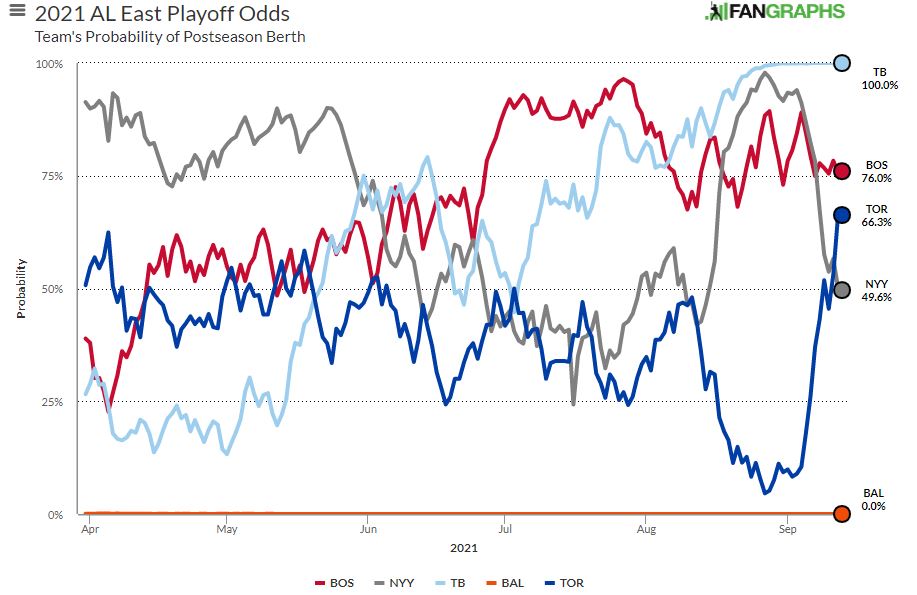Are Hitters Who Swing At More Strikes and Fewer Balls Actually Better?
If you’ve read any of my articles of late, you would know that I am currently fixated on plate discipline. My piece on Jarred Kelenic sparked an article on take value and hitter approach. After that, a discovery that Darin Ruf is succeeding with one of the lowest swing rates in baseball despite not having phenomenal plate discipline on the surface inspired research into zone-swing differential and what it may tell us about a hitter.
Under the plate discipline section of player pages and on our leaderboards, we list both O-Swing% and Z-Swing%. On a handful of occasions, though, writers here have used zone-swing differential. Chet Gutwein defined this stat as D-Swing% in his piece about the NL West, and Justin Choi wrote about it in an article on the Blue Jays’ aggressiveness in early counts. In my most recent piece on Ruf, I cited zone-swing differential to conclude that while his overall swing rate is low, his discipline might not actually be that good, as he’s still swinging at a fair amount of pitches outside the zone, which you can see when you look at his below-average D-Swing rate.
The idea behind D-Swing% is simple: Hitters should be better when they swing at strikes and take balls. This isn’t the only way to succeed at the plate, but you would think that better hitters would have higher D-Swing rates on average. There were a couple comments about D-Swing rate on my Ruf piece, and that inspired me to look into it further. Is this a stat that tells us more about hitters than what we already have with the standalone O-Swing% and Z-Swing% stats?
This exact question was actually explored on the FanGraphs community blog back in 2017, where user Dominikk85 broke hitters into top- and bottom-30 groups by wRC+, ISO, OBP, and BABIP to see if O-Swing%, Z-Swing%, or what they referred to as Z-O-Swing% had the biggest impact in explaining the difference between the groups. They found that being more aggressive in the strike zone “helps the power but seems to slightly hurt the OBP,” but overall, they saw an advantage in using D-Swing% over the individual components.
I ran a similar study, but I wanted to control for more variables — zone rate and contact rate — to isolate the effect of D-Swing%, as many plate discipline metrics are interrelated. You may swing less at pitches in the strike zone if you are seeing more pitches outside, or you may choose to swing at pitches in the strike zone with which you can make contact (preferably hard), which may lower your Z-Swing% but raise your Z-Contact%. Without at least attempting to adjust for some of these variables, we may be missing out on conscious hitter tendencies that may be more the result of the pitches that they are seeing rather than their inherent swing choices. Read the rest of this entry »

